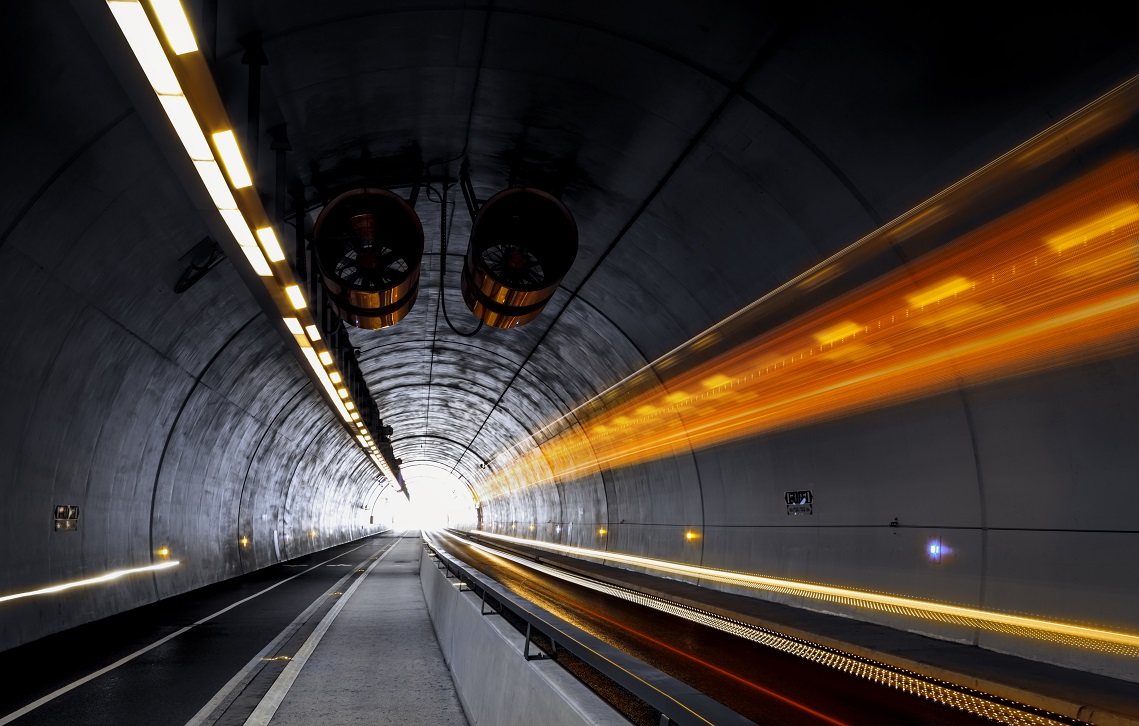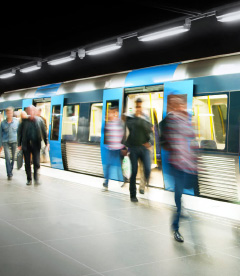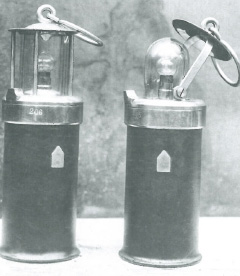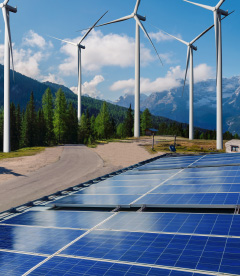Tunnels Are Marvels of Engineering. And Not Just Because They Were Drilled Into Rock
Application
November 29. 2023
2 min.
Being trapped in a dark, confined space deep underground is quite the stuff of nightmares. Thankfully, modern tunnels are equipped with multiple backup systems including those based on batteries.

Imagine yourself tens of meters below ground, or even kilometers. After all, the Gotthard Base Tunnel or GBT, the deepest railway tunnel in the world, has a maximum depth of 2,450 meters. And all of a sudden, the lights go out and the background humming of the ventilation stops. You have no idea of your location within the structure, and even if you had, what if the tunnel is tens of kilometers long. You may not have phone signal, and although rescuers are most certainly already underway, won't you run out of air until they arrive?
Before you start feeling uneasy, every time you're about to enter a traffic tunnel, let's look at how extremely unlikely a power outage is in these structures. Firstly, because large tunnels are usually served by multiple sources of electricity. Typically, these structures are being fed from at least two different substations located at opposite openings of the tunnel. And similarly, there are several, very robust uninterruptible power systems, or UPSs, ready to jump in as a backup.
Double is better. Or triple. Or quadruple…
One backup system may be fully dedicated to power emergency lighting, for instance. Diodes embedded across both sides of the tunnel tube, or tubes, are sized to provide around 10 percent of the lighting level in normal operation, illuminating the escape routes, but as well serve as an alarm – if the tunnel suddenly dives into red light, you know something is wrong. To power these diodes, a simple battery-backed UPS is enough. It may be equipped with Li-ion or Ni-Cd cells, the latter having the advantage of being more robust and reliable, providing unsurpassed lifetime.
Another critical system is the ventilation needed to manage the pollution generated by vehicles, as well as to divert smoke in case of a fire. Usually installed longitudinally, the jet fans, large axial fans, or a combination of the two, are often reversible in order to be able to clear the smoke in the desired direction. And there are fire alarms, CCTV cameras, medical equipment, or control and communication systems that need power, too. And all of this must be supplied for tens of minutes, sometimes even an hour or two, depending on the length of the tunnel.
So, in order to provide electricity for the whole structure, you would need a really huge battery storage which may not be economically viable, nor practical. Therefore, the batteries are only used to start a diesel generator, or a set of generators, that will keep the lights running for a prolonged period of time. Larger structures, however, are often equipped with diesel rotary UPSs, or DRUPS, which store electricity in the form of kinetic energy.
When needed, the electromechanical flywheel inside the DRUPS starts spinning, producing electricity for several tens of seconds, well enough to start the diesel generators. In large tunnels, these devices may boast an apparent power of 1000, or even up to 2000 kVA, and are installed with multiple redundancy in mind, for instance the aforementioned Gotthard tunnel features ten DRUPS systems. In fact, the GBT's has two backup grids, a north and a south one, which are coupled in such a way that if one fails, the remaining system can supply the entire structure without interruption.
So, just to keep electricity flowing, a modern tunnel usually combines several technologies wired in a way that makes a power outage virtually impossible. Not to mention the sophisticated installations and processes designed to suppress fire, provide medical aid, or quickly evacuate the structure. One might say that there are only few places in the world that are as safe as a modern traffic tunnel.
| Along traffic tunnels, batteries are increasingly deployed to store electricity for purposes far from any emergency. Especially in remote or rocky areas, where it is difficult to establish a connection to the public grid, renewable generation is used to power appliances including traffic lights, monitoring or communication systems. Most often combining solar and wind power, these island systems may have a capacity in the hundreds of watts or even megawatts. And in order to keep the power flowing constantly, they are coupled with a battery system consisting of low-maintenance cells, particularly of the Ni-Cd kind. |
Related articles
Why Stabilizing the Grid can be done so Efficiently with Batteries
March 27. 2025
2 min.
MoreElectric Buses on the fast Track
March 4. 2025
2 min.
MoreEasy Riding with Battery Power
February 13. 2025
2 min.
MoreMaking Water Flow with Batteries
November 8. 2024
2 min.
More



